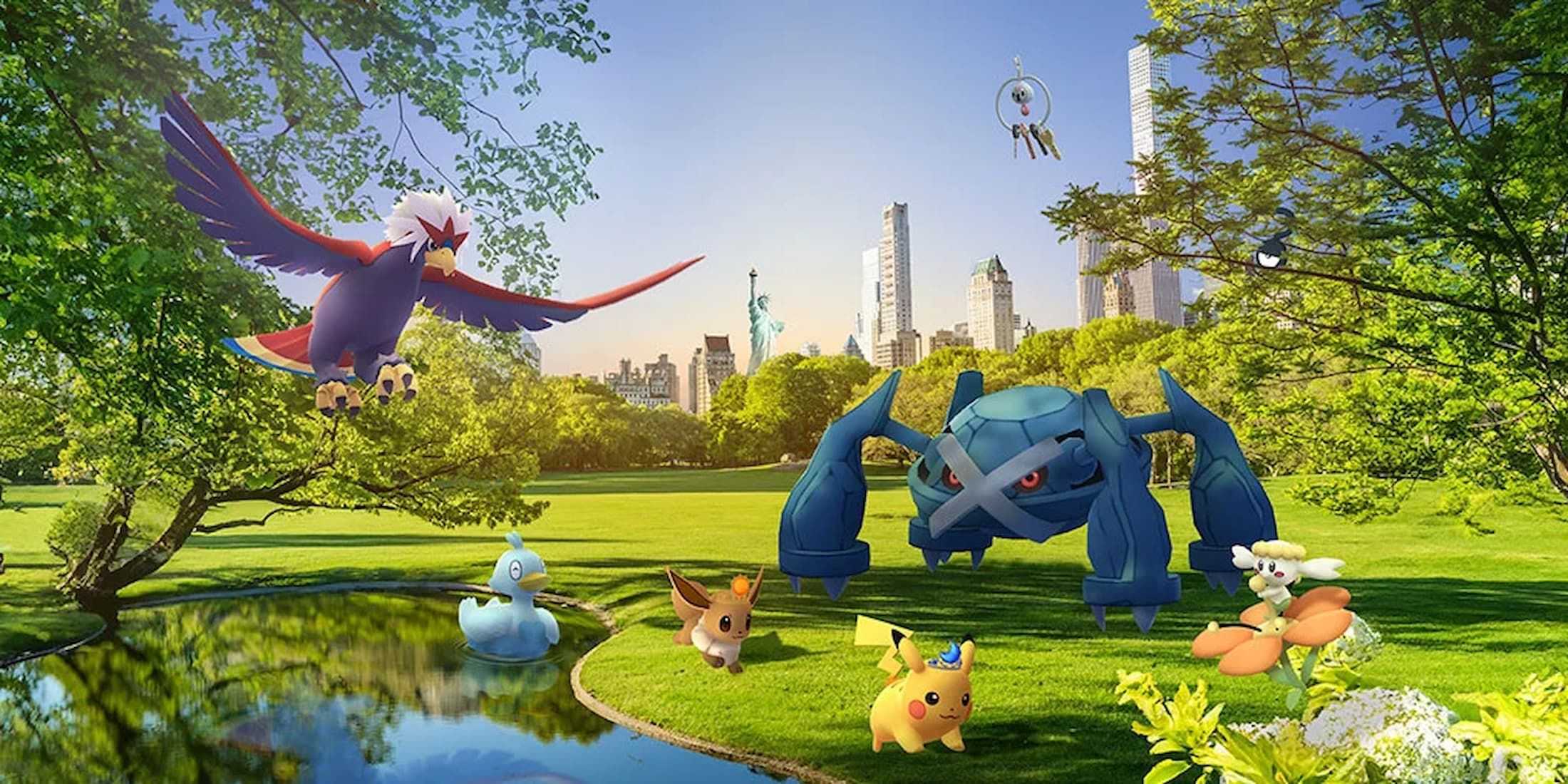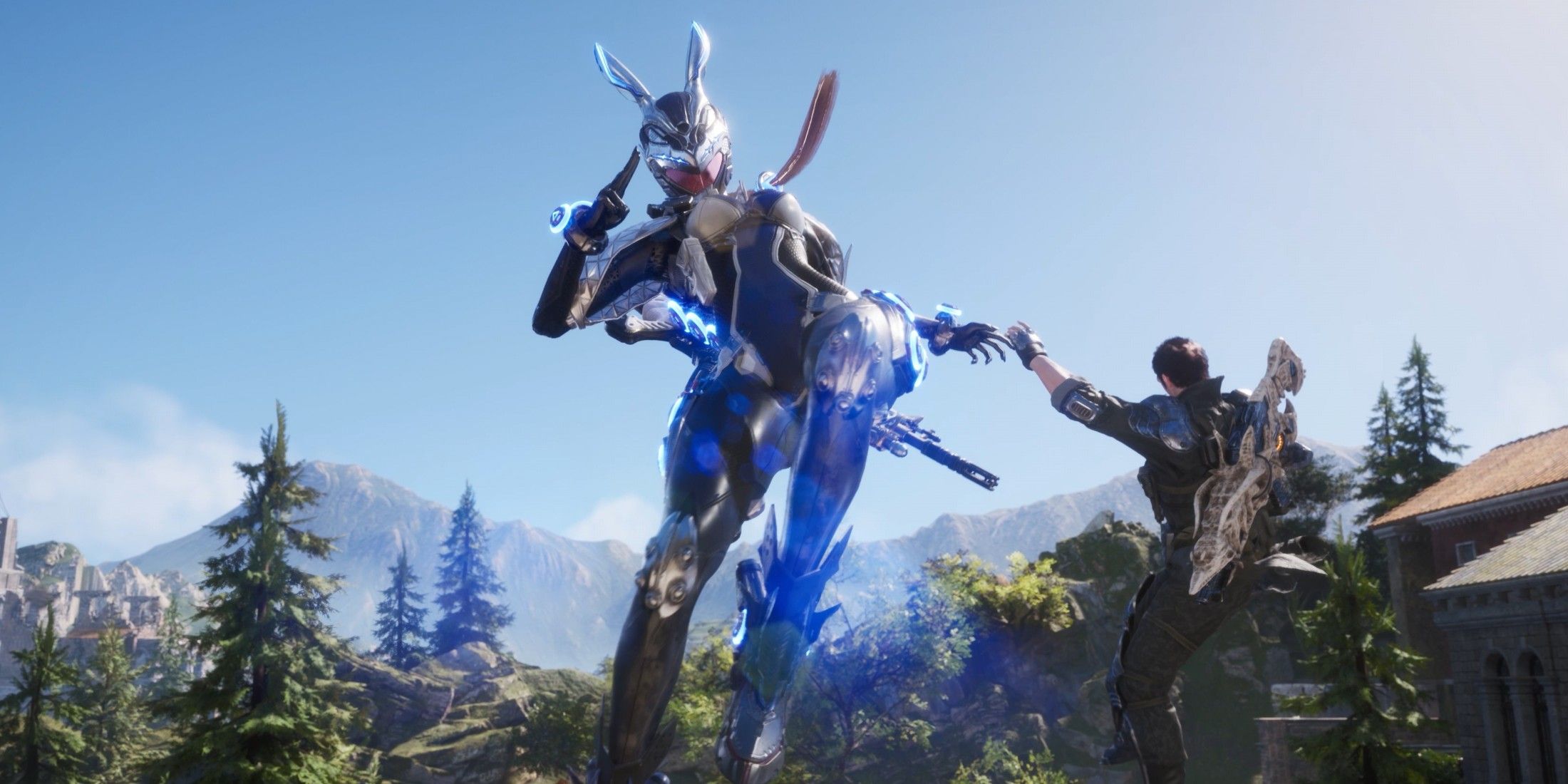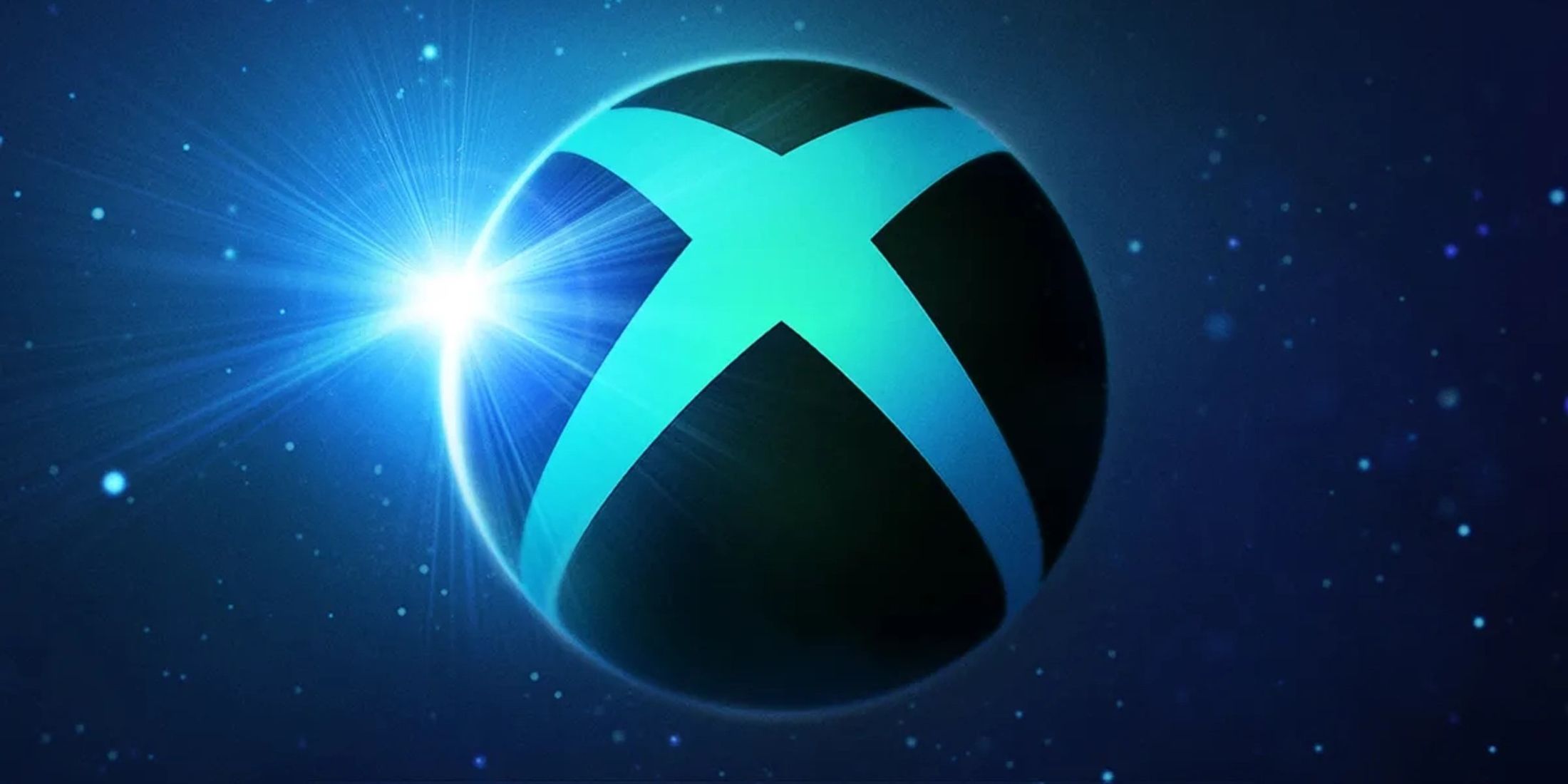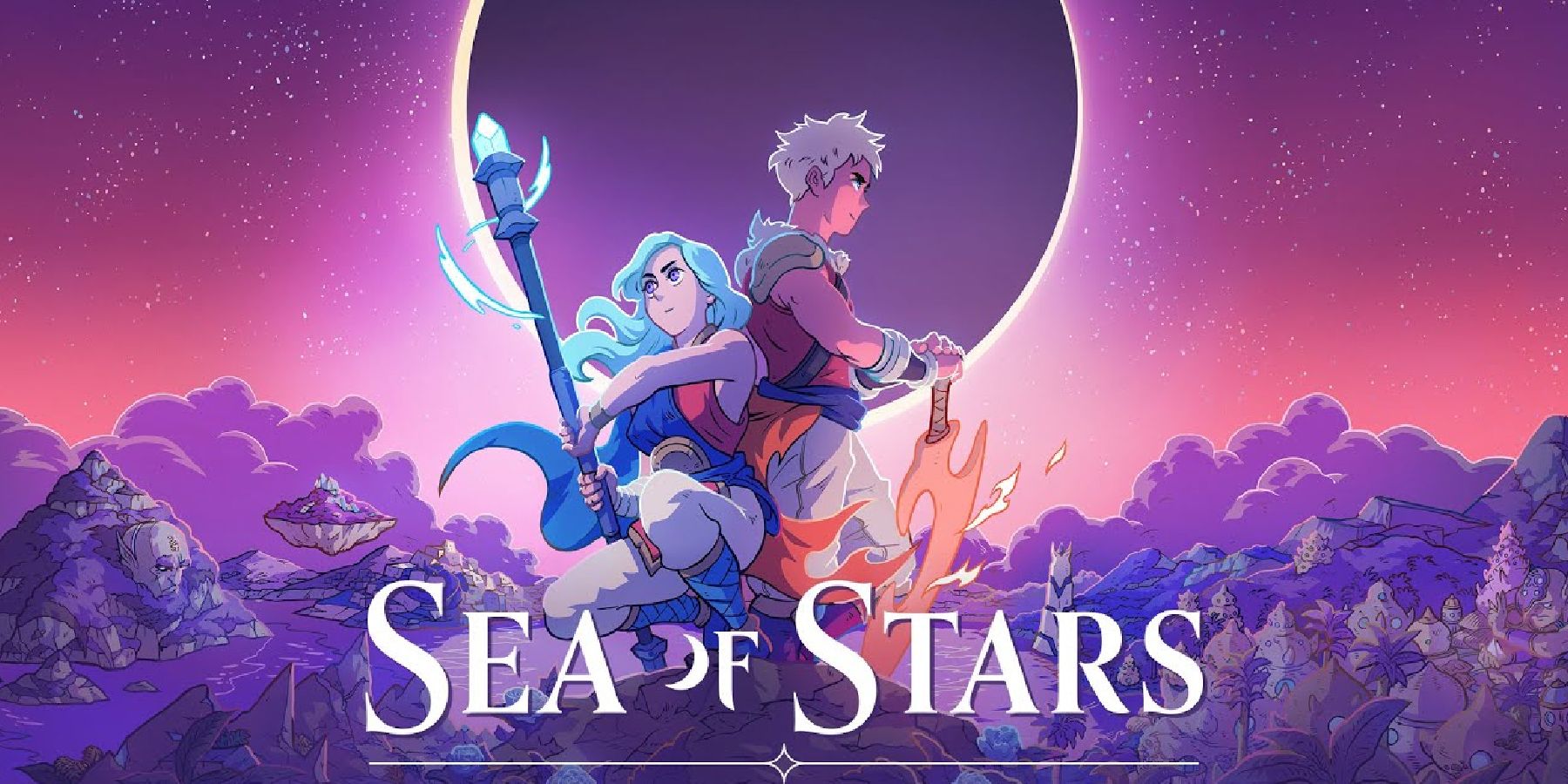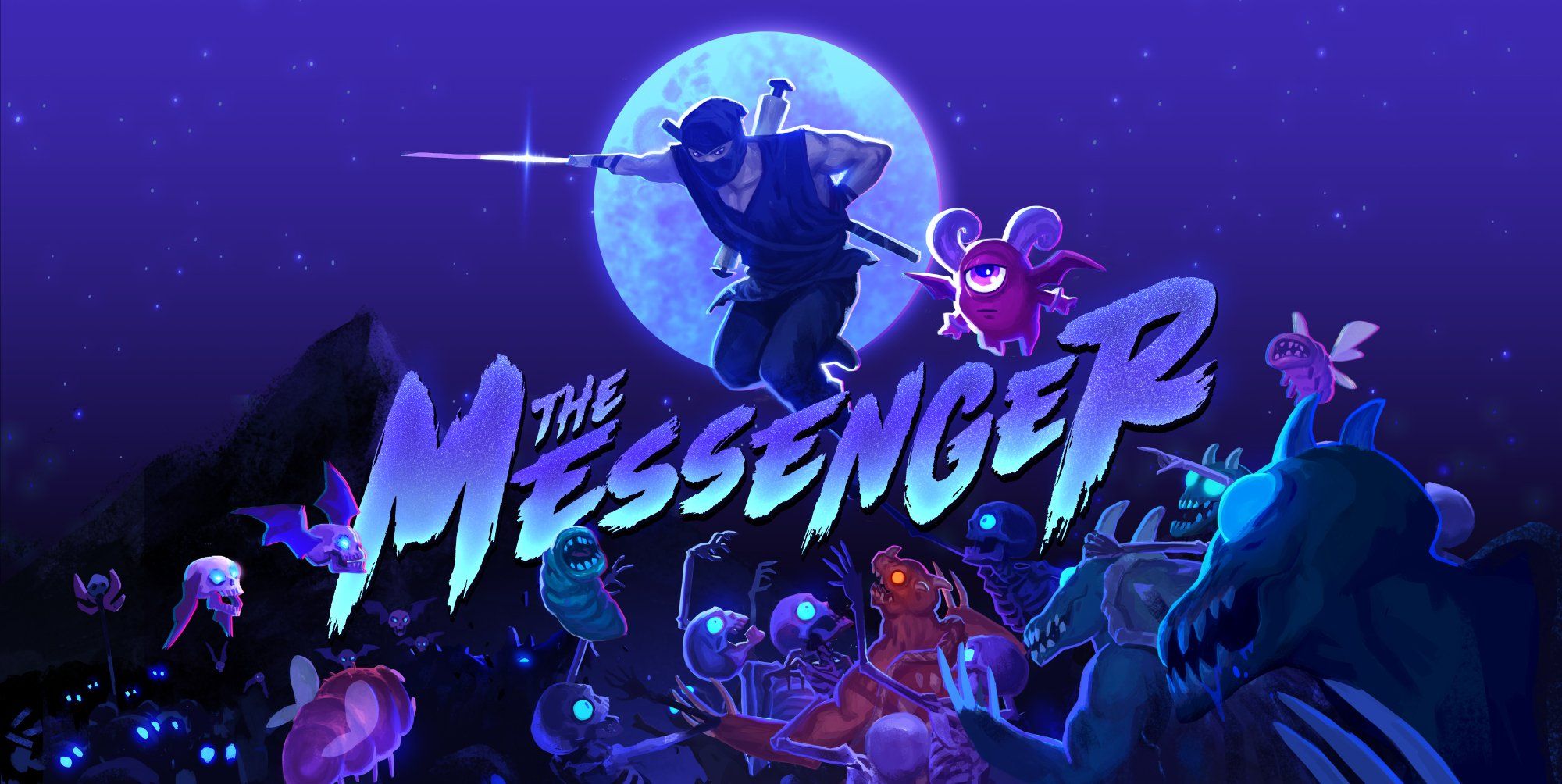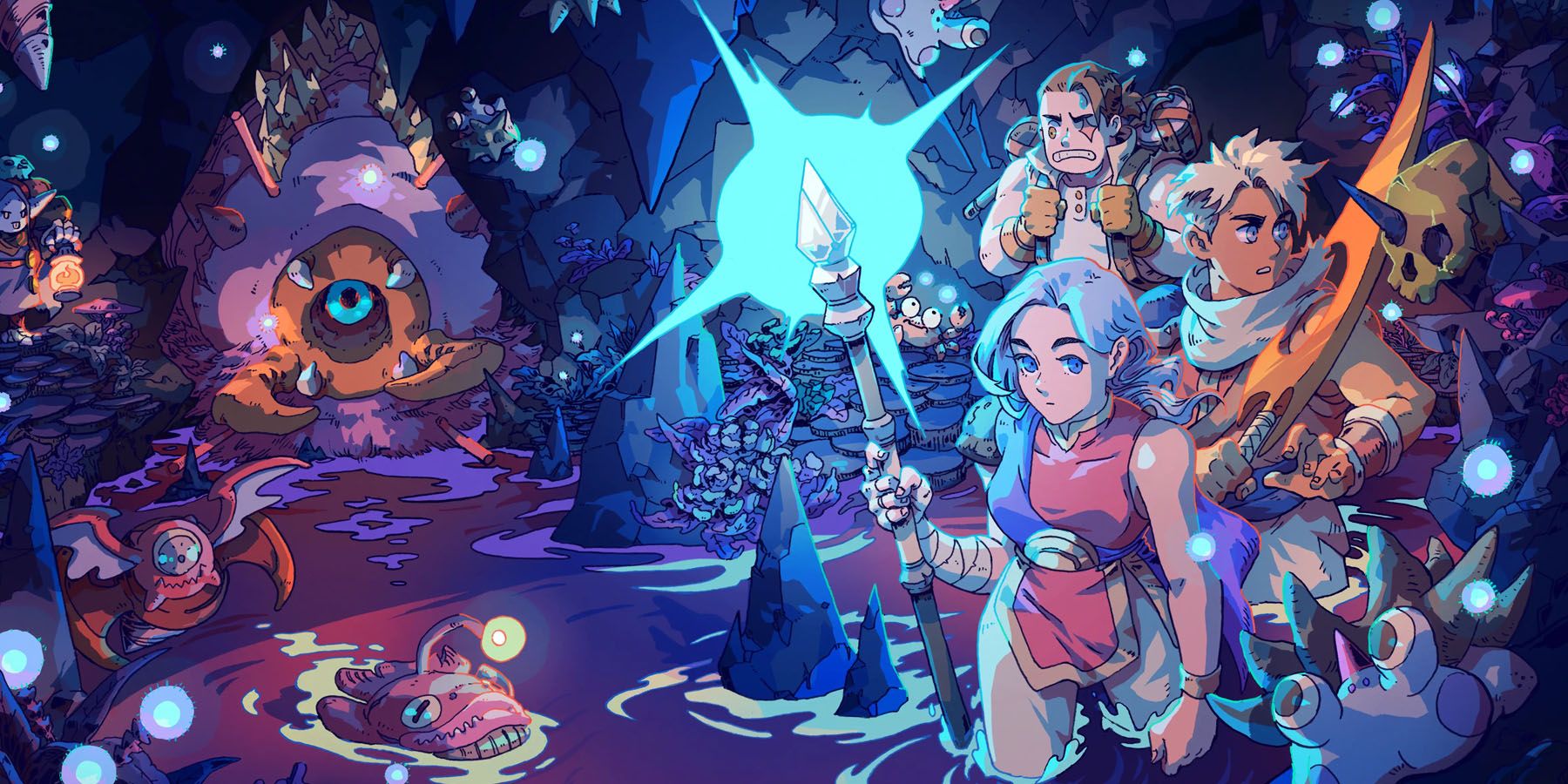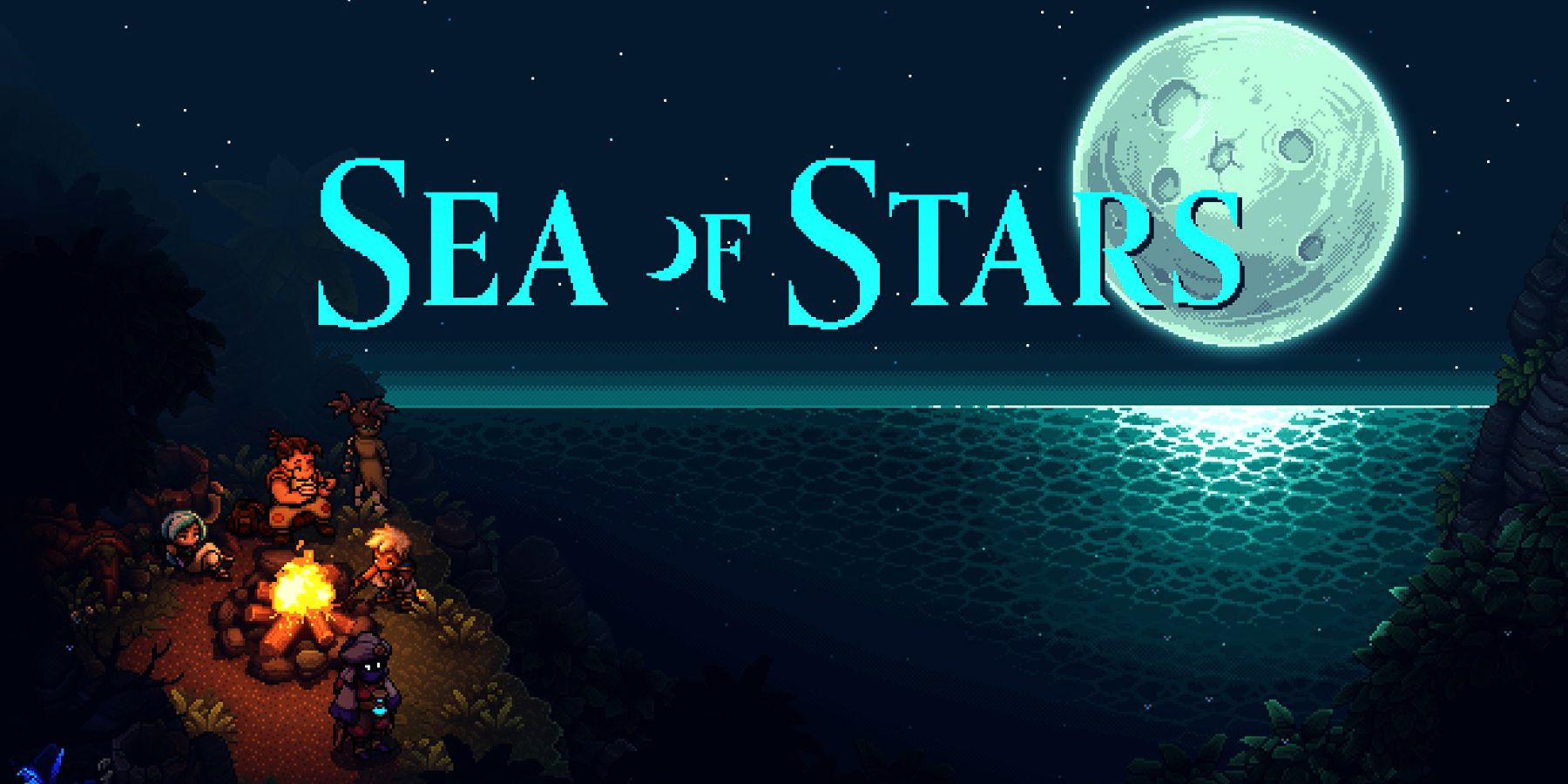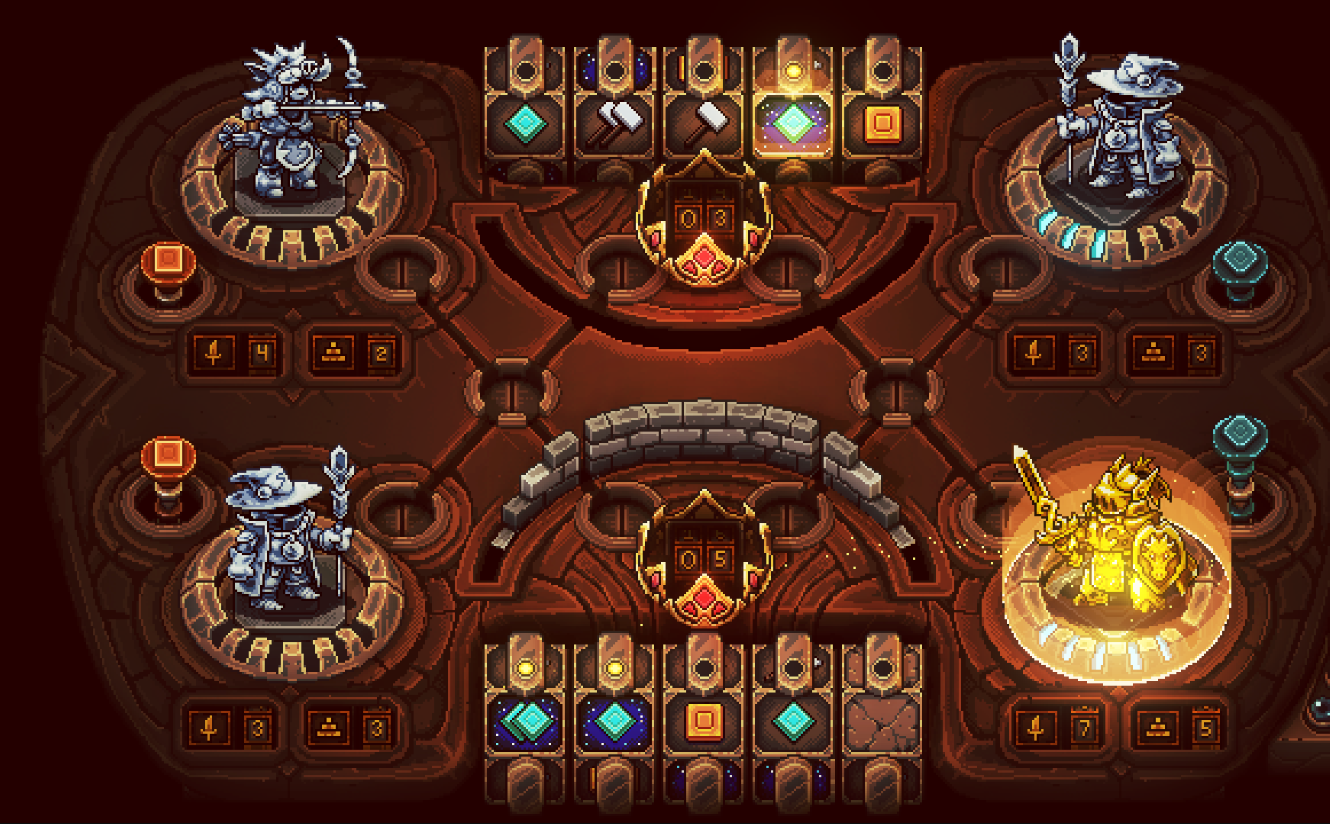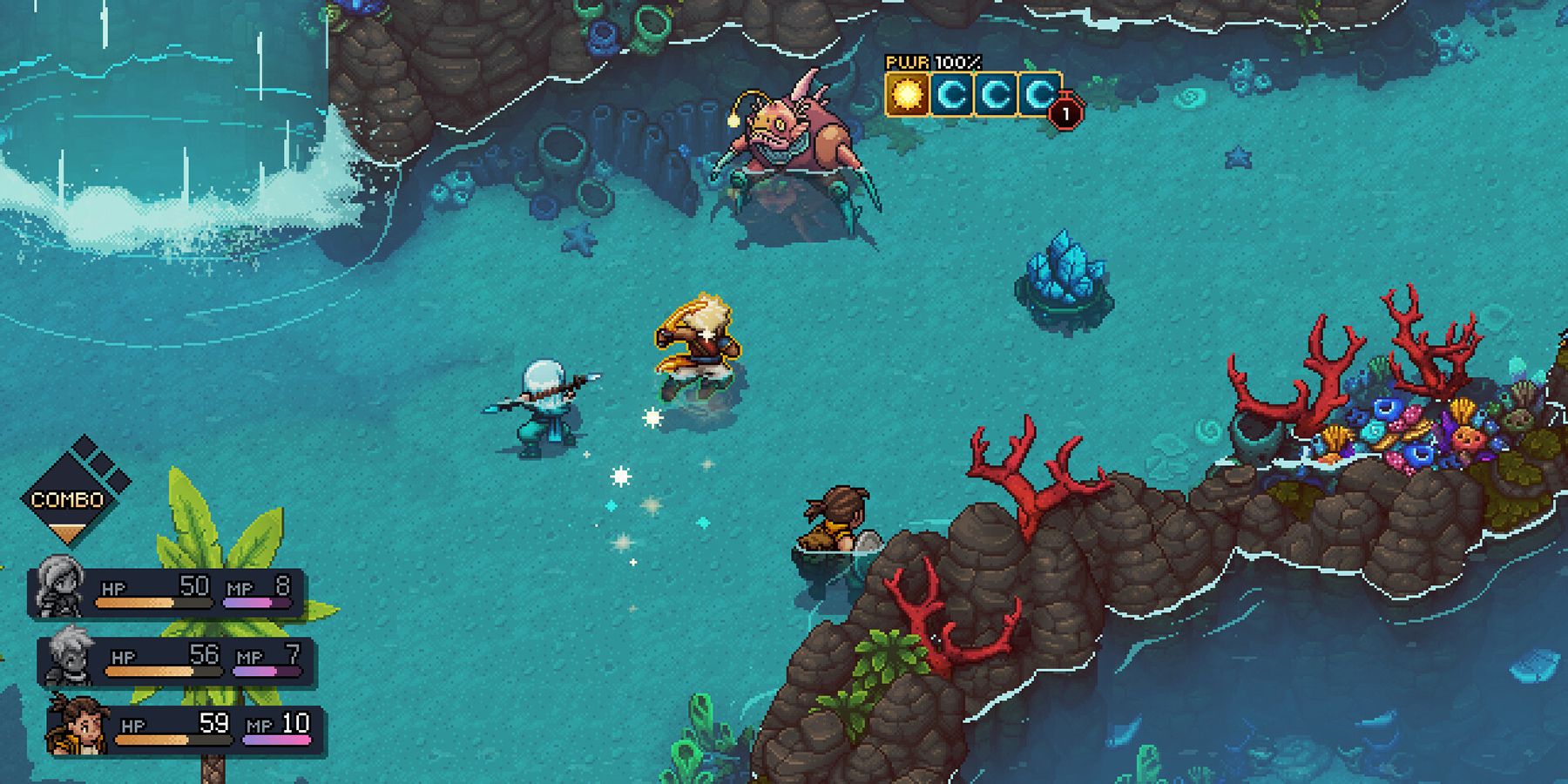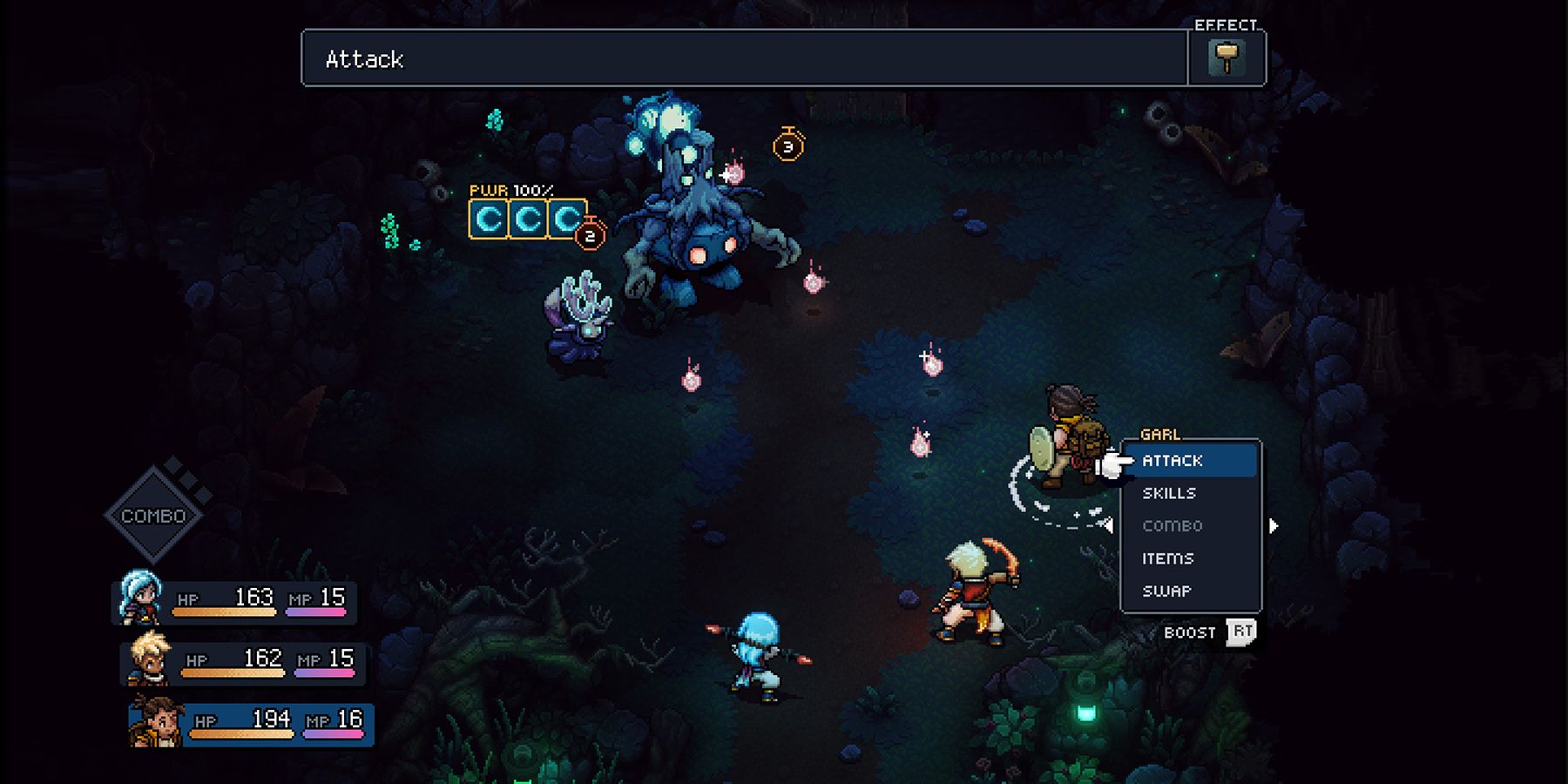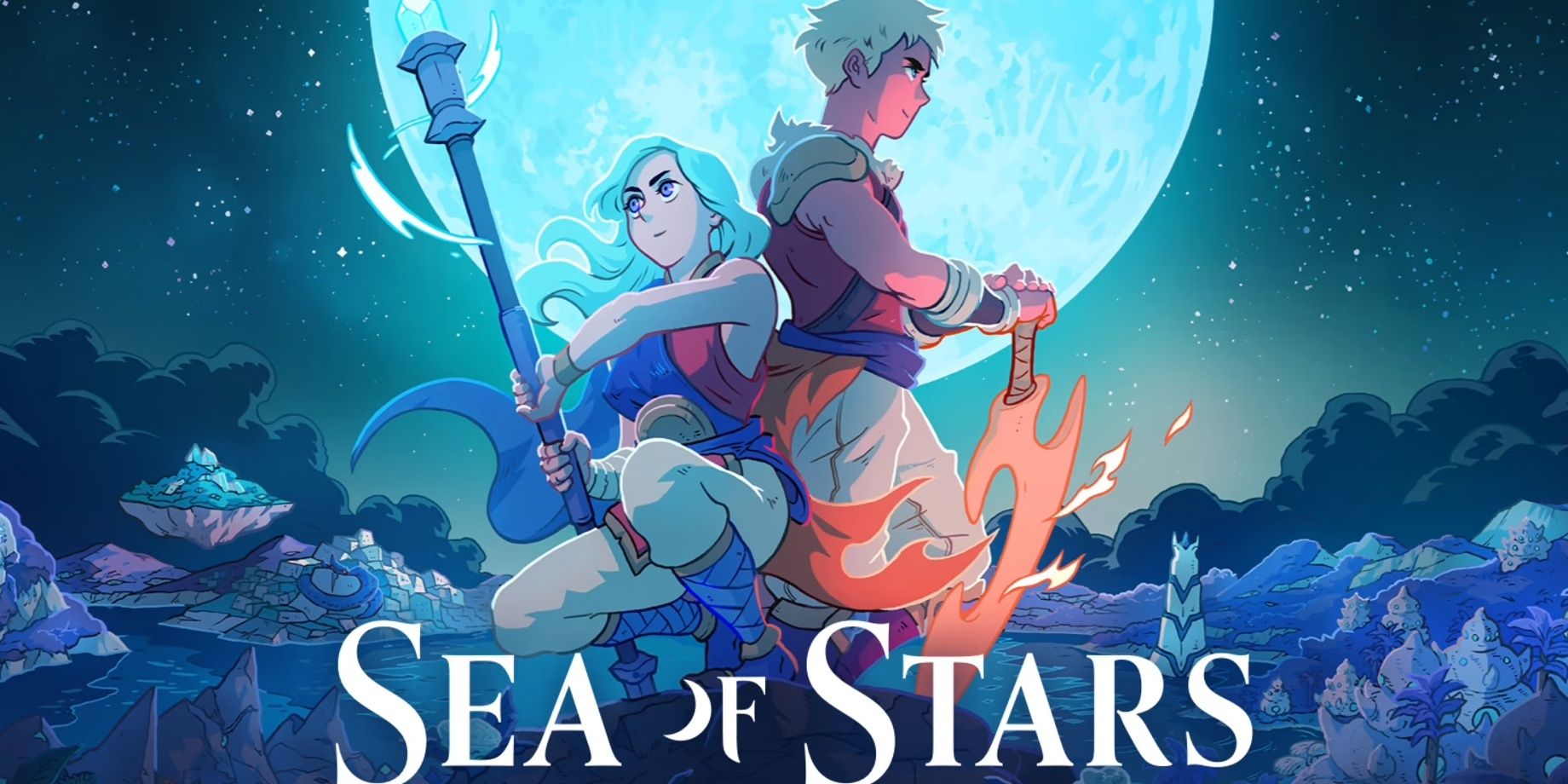In a year crowded with huge RPGs like Final Fantasy 16, Starfield, and Baldur’s Gate 3, fans of the genre are spoiled for choice. An indie title from the maker of 2018 platformer The Messenger adds yet another course to this banquet of options with Sea of Stars.
Sea of Stars, which has stellar reviews, follows the Solstice Warriors of Valere and Zale as they explore the islands of their world and travel to finish off the last threat from an ancient evil during an eclipse. Evocative of classics like Tales of Symphonia and Chrono Trigger, the game is both an homage to and reinvigoration of the classic roleplaying formula of the late ‘90s and early ‘00s. Game ZXC spoke with Sea of Stars’ creative director and Sabotage Studios CEO Thierry Boulanger just before the game’s release, where he reflected on everything that came before that moment. The following interview is edited for brevity and clarity.
Q: Sea of Stars was on Sabotage Studio's mind all the way back during the development of The Messenger. What's it like, now, to be right on the eve of release?
A: We've been obsessing over every single detail and every stone you can turn in this game for the last five years, right? And then we found ourselves with, like, nothing to do. Great. We sent that certification, so I suppose like Nintendo, Microsoft, PlayStation, they're all pressing the button for us when it comes out. So now it's out of our hands.
What's great about it is that we're all gathering for a little launch party as the dev team, so we have colleagues flying over. That's kind of keeping us busy, but no, we're certainly elated, I think would be the proper word. We're in the very fortunate position of being genuinely happy with the result of what we made. If we compare it to the vision, what we were trying to shoot for, this feels really good.
Q: What can you share with readers about the narrative of Sea of Stars?
A: It takes place in the same universe as The Messenger, like all our games will be in the same shared universe. In the case of Messenger, there had been a flood. It's supposed to be a post-apocalyptic kind of setting and there was a flood, there's only one island left, and it has been cursed. You're playing this ninja that has to carry a stroll across that one island, so you're the messenger, obviously.
In Sea of Stars, we go back into the past, so it's before the flood. Now there are many islands, the game takes place in an archipelago. That's useful in terms of world design because I think the small islands naturally allow for self-contained clear biomes and whatnot, as well as having a ship to sail around. But so, in this world, there were two immortal alchemists who had the great clash, they fought for millennia, and it left sort of remnants in this world. The evil one of the two is known as the Fleshmancer, and his creations are left behind. They're called the Seeds of Evil, and they eventually grow into big monsters that are impervious to everything except for Eclipse magic, and they're only weakened during an eclipse.
When children are born during a solstice, if you're born under the Winter Solstice, you get the power of the moon; if you were born into the Summer Solstice, you get the power of the sun. Those who are born on the solstice are delivered by a magical great eagle to a remote village where they are trained to become Solstice Warriors. And so essentially, it's a dual protagonist story, as we have one for Moon or one for Sun. You get to pick which one leads the party in terms of running in front of everyone, but they're kind of equally part of being the main character together. This pair will grow in power, they're kind of assessing the presence of these monsters, and it's understood that their job is to kind of cull those monsters.
Q: What made you decide on the two protagonist approach?
A: The creative process behind this whole fantasy world is from childhood for me. I've been building this world in my head since I was in elementary school, and I was actually playing Solstice Warriors with a friend of mine. I don't know, she was always moon, and I was always sun. It just carried over like that, but I think that the idea of the dual protagonist at its core was having the sun and the moon and that duality be present and be really strong. That's the basic situation, as you need the two for duality and combining the power and completing one another in that way.
Q: I was caught a bit by surprise by the prominence of sewing in the story’s prologue.
A: Oh, yeah. Any Solstice Warriors have this piece of cloth that they wear. I wanted to have something having to do with meditation right where they had to start training. Also something boring. Because if you just go to school to learn to, you know, shoot moonbeams and strike with your sword, it sounds like a pretty fun school, but I still wanted some flavor of “it sucks to go to school.” As a kid, you're eager to be done with it; otherwise, it just sounds like a fun school to go through. So I think it handles that part of, like, the homework flavor narratively.
There's also the idea that these it's forcing the characters to kind of reflect, right? This is just a device to force them to introspect and to think of the hero that they want to be. They have to weave their will into the piece of fabric. And when they pull it off, it's because the connection takes place, and they can manifest the tingling in the air into this item that they will then wear forever. That kind of gives them this sort of aura of protection that heightens their magical power and gives them some measure of protection.
Q: Can you tell me a little about the other party members?
A: I can tell you have two more that have been revealed. There are six total playable, but the last two we're waiting for players that discover them.
So first up is Garl. Garl is a childhood friend. They're like a trio, right? The game starts off with the three of them as kids. It's kind of understood that “when we grow up, you have a duty, but I'll always be with you, and we'll be on an adventure together and you guys do your duty, but I'll always be around.” They have this dream of adventure, but the harsher reality of those responsibilities kind of comes in, and it's like, “Okay, it's a bit more serious than we thought.” They also get separated when the protagonists go to school, and Garl can’t come with. The story kicks off with the three meeting again later. And their understanding is, “Well now that we understand a bit more how dire this whole thing is, our friend actually can't come with us,” but a Garl is just like that, right?
He's very gregarious, very determined, self-reliant, and has a very strong constitution. He's like, “No, I'll handle the survival bit. I'm a warrior cook now. I can use my cauldron lid in battle. I'm super resourceful. I'll keep your bellies full, and I'll know when to sit on the bench when it gets more serious.” It's pretty much how the core story of friendship and these three together–there's an understanding that you have a responsibility–but Garl is also there to kind of make sure everyone smells the flowers, you know?
The fourth character was revealed very recently actually, the week before release we dropped her in the launch trailer. So say hi, Seraï! She's a portal assassin. She's a bit more of a ninja-type where she has twin daggers. The way her twin daggers work is she can carve portals out of thin air and she can use these things to teleport behind a target and backstab someone, or put two on the floor and then jump from one to another throwing daggers, so she's a more acrobatic character and what she brings into the party is that she's a lot more on the mission. You can tell that she seems to have some connections and she understands some things. She can help move the situation when you need someone badass to just kind of take charge for a little while. She's a bit less patient and a bit more focused on the objectives. She gets it done essentially. In terms of her personality and backstory and how that grows, we want players to find out for themselves.
Q: I find the mechanic of changing the time of day to be really interesting. Where did that come from?
A: Narratively, it's just as a Solstice Warrior, you can access those magic runes that let you tap into your innate magic. That means, in this world, there can be devices where only a Solstice Warrior can access it. In a contraption like this, someone who doesn't have that magic wouldn't be able to cross, or they would have to wait like 19 hours for it to change naturally. There are devices in the world where Solstice Warriors from ancient times placed a seal, and it's impossible to open unless you can make it day and night within 40 seconds because some runes run out of power and they both need to be active at the same time for example. Instead, do you have innate magic? Yes? Then press on that and it opens. Instead, it allows us to do puzzles with light and coordinate things that start moving
Whenever there's like a secret left for you, you will need that power to be able to solve the thing that gives you like a new combo with Garl. It's a core of the little puzzles that we have to play with the dynamic lighting system and everything and make you feel like you know, you're the moon and the sun warriors.
Q: What about other traversal mechanics?
A: A big part is dungeons that are shorter than you would expect right? It's always done before you are, and then you just move on to the next biome. There are not, like, five forests in the game. We do the forest, that's done, next. We're trying to take you on this journey where it keeps on going, and we did the same with gameplay. In an early dungeon, you have these like weighted things that come out of the ground. You use that. It's used very lightly moving forward, and you just had the biggest bite out of that gameplay ingredient. Every new dungeon, unless it's more of an outdoor traversal area, brings in something new to manipulate. We didn't want dungeons to just be, you know, corridor-fight-next fight-key-use the key. They always have something that you have to touch, that you have to interact with.
You get a couple of little upgrades along the way. Early on, there’s a little town and there's going to be a thing, a problem that you want to fix for them. In that dungeon, you'll find a Mistral Bracelet. It basically lets you, with it as a button on your controller, do a burst of air, and that's basically our push mechanic. Instead of having to grab the block and slowly walk behind it, you just press it and it will kick all the way to the next collision and then stop there. So the way we approached puzzles with blocks is that you're pushing them in patterns, stacking things, and things like that. In this dungeon, you'll find the Mistral Bracelet, you used to get out of the dead end where you had the first big chest with an upgrade, and when you come back out, you start using that.
When you're back in the overworld, you see, “Oh, that's the opportunity I couldn't get through earlier, but now that I can do this, do I want to go back, get this chest?” You want to come back late. I don't want to say Metroidvania because, you know, it's a turn-based RPG. It's not all about these traversal upgrades that you go back and use to open new paths, but there is that layer for sure. From time to time, a dungeon will give you a new thing to play with. They combine, and they make new puzzles and things like that.
Q: You mentioned that having a boat and going around is kind of a thing in the game. What are players doing on the boat? It's more than just traversal, right?
A: Yeah, well…I don't want to get too theoretical about game design, but this principle of fishbowling, right? You're a small fish in a small bowl, you grow, we give you a bigger bowl, and we keep going like that. It's how games expand: your upgrades, your options, and things like that. At first, you're pretty much on the rail: You're in the first village, you can only go to the one dungeon, but then if you exit that first dungeon, do you want to go fishing? Oh, there's a locked door, but your next objective is the mountain. We're expanding your options as you go, but you're still fairly linear in terms of we send you to the next island and then to the next island.
But by the time you get your boat, you can go to any island that you want. You can return to the first one because maybe you now have some traversal upgrade or something that lets you access the thing that you can’t early on for an optional treasure, things like that. The role of the boat is the kickoff moment where you fully take charge of your own journey, right? Early on, it's you've got your headmaster like, “We all gather at the Eclipse at this place and that time,” so it's understood that you have to go there. But eventually, you don't have anyone telling you what to do anymore, right? That's when you get your vote. Both the kinetics, like both the gameplay and the story, are kind of tied together in this way. It's now up to you. You have your next objective, but you can also finish off some optional things if you want to go for them.
So the boat, yes, is traversal, meaning you sail to your next objective, but you can also always explore. It's not a very retro reference, but Mass Effect was a big influence on that. Whereas you're sailing on your boat, like in the world map view, right? That's a very small sprite. But you can always go into character view mode, where you're actually running around the boat, and then all of your party members have their favorite place that they like to hang out. You can imagine Seraï would be, like, below decks sharpening her daggers in a more shady area. You can just catch up with everyone and get pointers about what to do next.
I don't want to spoil too much either, but the pirate crew’s a pretty happy bunch, they play some of the music that you've discovered, the music sheets that you found. There's a minigame that you can also play from the boat. It really feels like a mobile headquarters, if you will. It’s like the camp, where you can always come from the world map and then your characters will tell you “Oh, we forget that we have the amulet, we need to go there or something.” So if you haven't played for two weeks, you know, you don't necessarily have to look online. We tried to have something where, within the game, you have the systems that you need to get reminders or pointers about what to do next.
Q: What can you tell me about Wheels?
A: Once you reach ground level at Brisk, there's a tavern, and you'll get your starter wheel.
There's a character–you hear of her, but it's unclear whether or not you'll actually meet–she's kind of like a superstar and not very accessible, you know. She goes by The Watchmaker, and she is so good at her craft that she can capture the magic in the air and infuse it in the parts that she uses when she builds her clockwork things. She's not just a good artisan, she's an actual magician at it. She's always toiling away, she built a castle where time doesn't pass. She's not exactly immortal, because if she leaves, she will age, but she just stays there and has been working there forever. She wanted to take a break at some point for some arc of her immortal life, so she invented a tabletop board game. She shipped these add-ons that people can just install on any tables or even a barrel, and it gives you this little tabletop world. Now it's all the rage.
It's like a fantasy battler if you will. You have little figurines and the whole table is clockwork, so you have these wheels that you're spinning and you're matching. Essentially, your enemy has two figurines and you also have two, and they're very clichéd classes–like Archer Mage, Warrior, Assassin, Priest, Engineer, and things like that. Spinning the wheels and matching symbols on them, gives you energy for either one of your heroes or building your Bulwark, basically a stone wall. You're making your characters act and you need to attack the other side, destroy their Bulwark, and then attack their crown. The first one that brings the other player to zero hit points wins the game.
But there's also XP for your little figurines. They entered the table and they reemerged at tier two, tier three visually. Every game you start at level one and level up. Do you want to rush for progression? Do you want to go for the face directly? So it's like a strategy meets random?
Also, there are only four wheels on the table. The fifth one is the player wheel that you contribute. You start off with, like, a cheap copper wheel that doesn't have very good faces on it. But, you can beat the champion in every town–every tavern has a Wheels champion–and as you beat them, you unlock new playable figurines, new classes, and you also upgrade your own player wheel and so you try to get better.
The rumor is that you may get to challenge The Watchmaker. But that is only a rumor.
Q: I've got to say the Watchmaker is now my favorite character in the game.
A: Yeah, she's a good one.
Q: What are some other downtime activities in the game?
A: Wheels is for sure the biggest one, the other big one is fishing. There are lakes here and there, every island will have at least one lake. It's very simple, but the way it was approached is different. I don't want something that you play in the interface, you know? Like, you're not going to have a bobber with gravity gameplay to try to keep in the green zone. Everything is diegetic. It's in the world. The biggest reference was Breath of Fire 3 on PlayStation. Their fishing was a big inspiration for me.
You look at the lake and physically you see the shadow of the fishes that are swimming. And from there, from that point, everything is kept all diegetic all in the world. You press two casts and your bobber goes at max speed–you don't get a meter that you need to press, it just goes–and you have air control on its left and right. When you press again, it kicks it down to go into the water and you're trying to land on the fish. If you're near enough, one will catch, and from there, there's like a water current that appears on the water surface. That's your left-right gameplay; you need to keep the fish in that zone. If you hold to reel while it's in the zone it comes towards the dock, but if you reel when it's outside the zone, you start breaking your line. That's the basics of it.
But then every fish species that we made has a different behavior. Are they super excited at first then they calm down later? Are they super calm but really difficult to do the final part? Things like that. We made over 20 different species so every lake has different ones.
It's more of a completion thing. It will give you fish meat or seafood that you can use for cooking for free because you just got it instead of buying groceries, and also it's kind of like a completion thing. If you want to try to catch them all, you can just go to the lake. “Oh, I'm missing one species from this one lake!” for those who like to do everything. And it's got banjo music.
Q: So, you're releasing a cookbook for this game, right?
A: I reckon we might. It's the recipes. Oh, yeah. The idea was really to make something immersive, so the ASMR sound effect was a big part and then the pixel illustration of the steps to make everything. I also tried to have something where the ingredients and the steps that you see make sense if you were to, like make it for real. But also, it's just this fantasy of campfire cooking, which in real life is such a hassle. For now, we just get the upsides from a game.
Q: Shifting gears to talk about the combat mechanics, Locks in particular feel interesting.
A: Combat is purely turn-based, there are no time bars. One of the reasons for that is since we have active inputs in your game, if we think of Super Mario RPG’s combat, you press at the right frame, you get an extra hit or things like that. We have no time bar because when a time bar is full and the menu appears to select an action, that would conflict. Pure turn based allows us to have action within the actions, meaning a player input during a battle action. Also, being set in terms like this, there's less variance, so we can have a tighter balancing on difficulty and what we expect the player to strategize for. Because if you have time bars, some people just choose faster, so they get more actions in between one action from the boss or whatever. So now it's like a tighter, tighter leash on it where you have to contend with–how many player actions you have before the big fireball hits you.
For locks, when enemies do a regular attack, they just have a timer counting down player actions. When you see Locks, that means that the enemy is preparing something, let's just say, stronger. It can be like a skill or spell, and the Locks are an opportunity for the player to weaken the ensuing action or cancel it altogether.
The Locks each display a different type, so look at the characters that we have revealed. Valere will have blunt because she fights with a staff and also moon because that's her innate magic. Zale will have blade and sun. Garl is only blunt, he's got no magic–his power is to just be the best. And then Seraï will have venom or poison if you will. Then you get to more characters who will also contribute different patterns. The idea for combat is, instead of saying “Oh, this is my mage, this is my healer, this is my heavy damage dealer,” it's that they are each. It's not that they're evened out, you know, but the idea is that they each have a role to play instead of you pigeonholing yourself on like your favorite skill or character. It's to build an understanding of the kit that you have and different attack patterns or different damage types.
What the Locks do is they challenge you. If you don't hit me with sword twice and moon twice and blunt once, you're eating lightning, and so that challenged you to go “Oh, okay, so if I save my combo points for these two to attack at the same time, I'm going to take out sword, sword, and blunt in a single move. And then I need to do two moons in the one throw I have left, so that's my Moonrang that I need to bounce properly at least once.” Things like that. And so it's causing this conversation in the player's mind, or at least that's the intention.
When your party extends because you only get three at the same time in combat, you can swap with an ally that's in the back row, swap them in and you can act right away–there is no cost. When it's your turn, if you're three characters are ready to act, you can just browse between them and get whichever you want in whichever order that you prefer. It was really important to remove the friction, the cost to all of those things. It’s just freeflow, just act. It's all about trying to solve this puzzle, but what that does is the game is kind of giving you like, “Oh, can you deal with this?” And if you don't care so much about Zale, the sun character, there are still going to be moments where that's the character you need for the Lock, that's the key to the thing you're trying to avoid. So it kind of makes you stumble upon combinations, attack patterns, and collaborations between some of the characters that you otherwise might not go for if you didn't get a crush the second they appeared on screen or something. It also makes it kind of more complete, where everyone plays an important role.
Also, it's a bit of a saving throw. No one wants to play something where you never see any spells flying, right? So it’s not cancel everything all the time, otherwise you fail. The locks are also the power level of the action. For example, there are four locks, and the enemy may be about to do a fireball. If you only break two locks, you still remove maybe 40% of the spell power of what they're about to do. So even when sometimes you can barely get an action in and the thing still goes, you can still weaken it.
The idea is to turn these moments where you're just taking hits into something that can be empowering for the player. So you're constantly giving you something to do about everything that's happening to keep you getting more engaged.
Q: Something you kind of touched on there is that the characters are not quite the traditional tank, healer, caster style archetypes. Was that a conscious decision?
A: Absolutely. Oh, yeah, that was very, very deliberate. If we want to play with the usual archetypes we have, we have 200 games out there, and most of them are great, you know? But I wanted to change it a little bit and try to come up with something where it's like the way every character is not only how much damage do I do, it's also very much about the utility that a character has and the utility part of it is where the Looks really carry.
I think that the combat system lets you feel that any character is not like, “Oh, that's my heavy hitter, so unless I need a heavy hit, they're useless,” or whatever. It's like, “No, I can still need some moon.” Any of them will be, in their own time, the MVP of a battle. It's like, oh, that's the one that could unlock this combination. I think it evens it out in a way that they all feel equally important. And you feel these moments, especially on a boss when it's getting dire, where you're like thankful that you have a character that you're maybe a little less invested in, they can still save the day because they have the key for what you need.
Q: Can you also dive into live mana?
A: Live mana is a mechanic where whenever you perform a regular attack, it drops some energy on the floor, and you can then use that as a boost on any character to add a portion of your magical attack to your next attack. You can stack up to three charges on the floor, and then you have to spend them.
Also for example, if you're going to use the Sunball, it’s a pretty powerful spell. It costs eight MP. All the costs are really low in the game, you have a low cap on MP, because you regenerate with every attack that you make. The idea was that instead of you never using any spells, and then you do nothing but on a boss, it's constantly spacing spells. If your bar is full and you're just attacking, you're wasting your regeneration. So it hopefully creates a dance where you vary a little bit a little more with what you do.
Live Mana comes into play where if you're going to spend MP on a spell. Well on top of that, you can also boost up to three times to make it even stronger. And in the case of the regular attacks, where boosting is good or where Live Mana is good, it will add your damage type to your attack. For example, if you're playing Valere and you're going to hit, it's going to do blunt damage. And if you time it right, you can take out two blunt Locks in a single move. But if what the enemy is asking is for two blunt and one moon, you can boost and you're not spending any MP, you're just using a Live Mana charge from someone else's regular attack. And that's going to make you hit for both blunt and moon. So you take out all three Locks with just a boosted regular attack that also deals a bit more damage, roughly one boost charge will add around a third of your magical attack step to whatever you're about to do next. So it's the same goes for a heal. Zale’s Healing Light is not a very powerful heal, but the cost is really low. What that invites you to do is boost it three times and you just did double the healing, but it's still low on the cost for MP so that it evens things out.
Q: These different mechanics plus the way that each spell has its own sort of active feature, you have to pay attention and time things. This really makes turn-based combat, which is kind of seen as old and slow and outdated, feel very active and dynamic. Was that a goal?
A: Absolutely. I mean, for me, that's all from the inspiration. Timing to hit, that's very Super Mario RPG and Paper Mario. I played all of these games, I grew up with them. What happened was the mix of, you know, the seamlessness of Chrono Trigger, if you will–like battle not occurring in the separate arena that you load into–and the active combat of Super Mario RPG. Unless I missed it, there was never a game that had both, you know. And that's the thing for me, since I was probably like 12 or something, whenever there was a new RPG coming out, I was like, “Oh, is it the one that has both?” That you can see the enemy before battle and you are physically engaged where you're traversing, but also you can find your input. There was never a game that had both of those. For me, it was very clear from the get-go that this is the perfect combination to have for gameplay and traversal where both of these game loops to kind of tie in together perfectly.
Honestly, it flowed really naturally because it just makes sense. It feels more active; you don't go from it's active when I moved to it's kind of boring when I fight . A fight can drag, but you're constantly engaged because you have these inputs to keep doing and you can always perform in very micro-loops instead of like, the whole fight being just like your gear versus your amount of items and things like that. So I think it really worked out nicely.
Q: The music in this game is good, and you have a big name composer, Chrono Trigger’s Yasunori Mitsuda, on it.
A: Yes, absolutely. It was always the plan to pay respect to music and how important it is in a game like this for sure.
Q: What made you go for this particular, I would call it a retro-HD visual style that you've got?
A: Oh, boy I mean, yeah, if HD-2D means a 3D world with billboard sprites, then what do you call the actual higher resolution 2D assets, right? That makes sense. Yeah.
Yeah, we wanted to push visually with a dream of what these games could have become if we stuck to sprites. I suppose we're trying to make it kind of like a retro-plus thing? How do we add just a little bit more to it? But we were very careful not to break the feeling of, you know, like, your big T-shirt over your knees and your arms inside the sleeves with the controller, you know? For me, it's this Saturday morning basement feel. It's hard to describe, but I think when people play it, they can kind of feel this connection. We did a lot of things in terms of looking at iterations on the rendering of the game, and it had to feel retro. We can blow one or two more puffs of air into it, but you don't want that retro balloon to burst, right?
It was clear from the get-go that going full sprites was the key, and it should sit in a place where it's as good as what we remember those games looking like, right? Which is very different from what they actually look like.
Q: Speaking of retro, I was surprised to see save points. What made you decide to incorporate that?
A: I mean, we do have autosave in the game. If you've never touched the book, when you hit Continue at the title screen you'll pick up roughly where you left off.
No, I think it's just a simple, low-cost thing that just makes the game feel–it just feels right. How can I say this? It makes sense for the types of things that it's calling back to right? Like, seeing the save point is, “Oh, yeah, I'm home.” I think it helps it feel like home in terms of if you look at a screenshot and you remember fondly the inspirations you understand where it came from. I think it's part of the language to have that in there. I think for a lot of players, it's likely to elevate that sense of “I know where this comes from, and I get this” even though the autosave has got your back in any case.
Q: It definitely works as part of language. I remember walking up to that big psychedelic worm boss in the first dungeon. I see the campfire fire and the save point and know I'm about to fight a boss.
A: I think that's a big thing. It wasn't necessary for the game to flow properly or for the players not to have a bad experience, but I think precisely what you speak to is this thing where there's this handshake, right? Because this game isn't breaking any ground in terms of the genre. It's something that's been done, and when looking back, we're kind of trying to greet and host you–to host the best event possible for those who kind of remember this, right? All these moments that you go and get for yourself, you know there’s going to be a boss ahead. Well, it's kind of like this high five moment. We both know. We expect you to know. It’s great. We're just having this moment of acknowledgment, right?
Q: Are there little nods to The Messenger? Easter eggs and the like?
A: I have received messages and screencaps about people that were really excited, but we're keeping it to like, a maybe, because we want people to discover it for themselves. But, you know, with the idea of it's in the archipelago, there's all these islands? Well, you can infer that one of them is the island from Messenger. Maybe eventually, you know, you put your foot down there? It's for the players to discover.
I think that the main thing was not to just cash in on that, on people being invested in Messenger. We really wanted to present something completely fresh, completely new. You get fully invested in that. And then maybe at some point there is something, but it doesn't rely on it on any level.
[END]
Sea of Stars is available for PC, PS4, PS5, Switch, Xbox One, and Xbox Series X/S.

